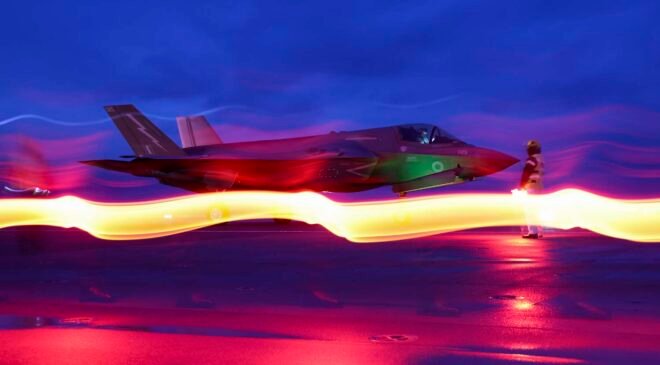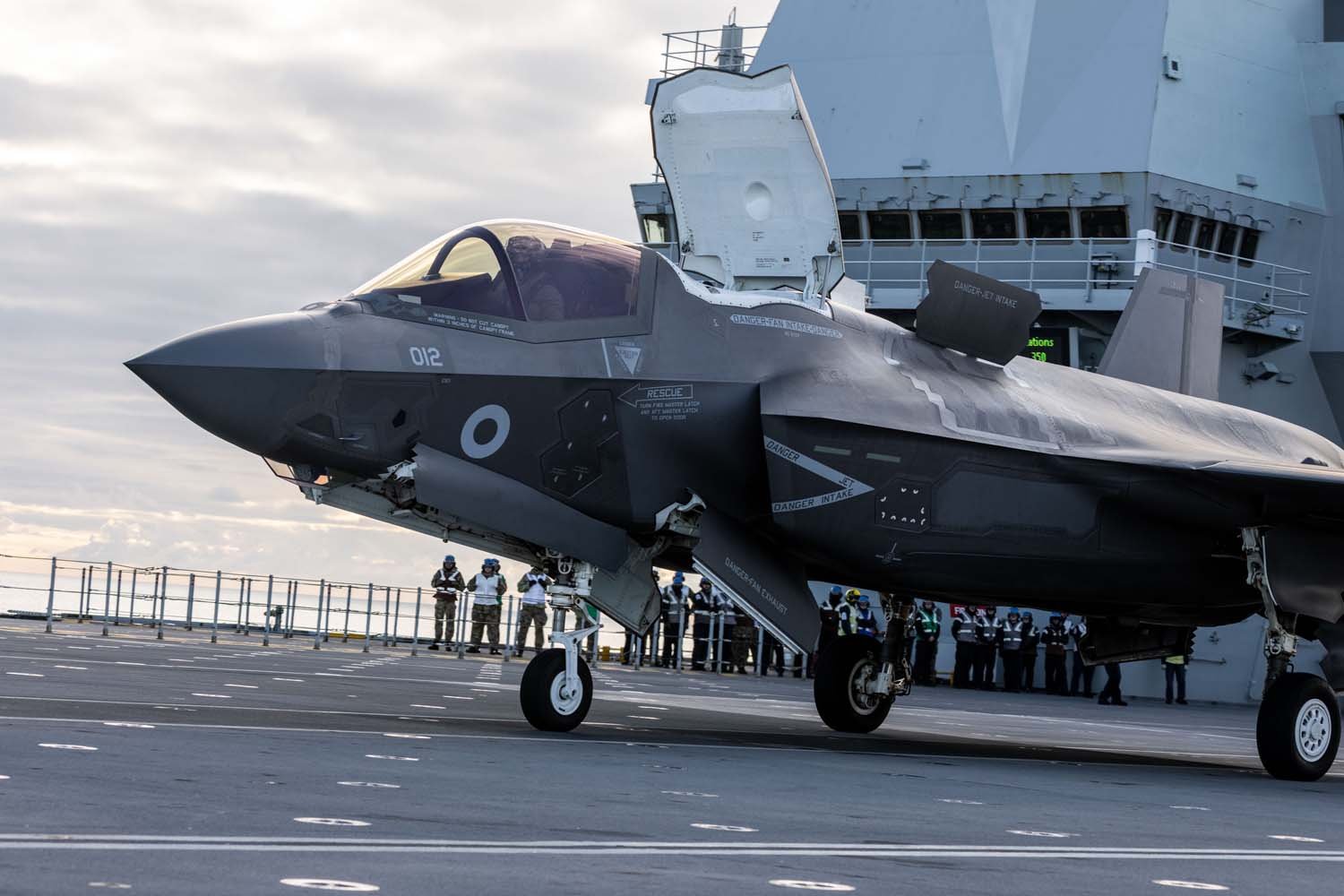HMS Queen Elizabeth and her Carrier Strike Group have returned home after three weeks of flying operations in the North Sea and Scandinavia.
The fleet flagship was at the heart of a task force consisting of five warships, F-35B Lightning jets from 617 Squadron and Wildcat and Merlin helicopters.
HMS Diamond, HMS Kent, HMS Richmond and RFA Tidesurge formed a protective ring of steel around the aircraft carrier as jets and helicopters flew sorties round the clock, day and night.

Operation Achillean is a proof-of-concept deployment of NATO’s 5th generation maritime strike capability, comprising of F-35 carrier strike, Merlin and Wildcat helicopters. All elements of Op Achillean will be complementary of NATO and JEF activity, as the UK underscores its commitment to safeguarding European security. HMS Queen Elizabeth will be at the centre of the Carrier Strike Group, with the Commander UK Carrier Strike Group, Commodore Angus Essenhigh OBE Royal Navy and his staff commanding from the aircraft carrier.
The group stopped in Oslo, Norway’s capital, to reaffirm bonds with one of the UK’s closest NATO and Joint Expeditionary Force (JEF) allies before continuing training in the North Sea on their journey back to Portsmouth – with more fast jet pilots qualifying to operate from the carrier.
HMS Queen Elizabeth and her Strike Group made up the northern ‘arm’ of the Royal Navy’s Operation Achillean, which has also seen an amphibious task group spearheaded by HMS Albion exercising in the Mediterranean.
Commodore Angus Essenhigh, Commander of the UK Carrier Strike Group, said: “Operation Achillean has been an excellent opportunity to bring together and exercise the complex array of capabilities that make up the UK Carrier Strike Group.
“With our exceptional people at its core I have been very pleased at what the CSG has achieved in a small space of time often in challenging weather.
“With many new faces across the Strike Group, we have gelled as a team and reset our currency, conducting safe yet rigorous training alongside our bilateral, JEF and NATO partners.
“A fantastic visit to Oslo to reaffirm the strength of the bilateral relationship with Norway was the icing on the cake.”
HMS Diamond returned to Portsmouth earlier this week but spent time attached to the aircraft carrier providing air defence. The Type 45 destroyer used her powerful array of sensors in exercises with RAF Typhoons, US Air Force F-15s and F-35As (the land-based variant of the stealth fighter), providing a great test for fighter controllers on board.
Norwegian F-35As were also in action, working with 617 Squadron’s F-35Bs in joint exercises over the North Sea, while the US Navy’s USS Paul Ignatius and French ship FS Aquitaine operated with the Strike Group, sharing information as part of the security mission.
UK Carrier Strike Group, Commander Air Group, Captain Mark Sparrow, said: “Operation Achillean has been a great opportunity for the Carrier Air Wing to continue the development of UK Carrier Strike following on from last year’s worldwide deployment.
“In particular, the Lightning Force have generated additional ‘carrier qualified’ pilots whilst also having operated with Norwegian F-35 in the North Sea.
“I am extremely pleased with how the whole team from HMS Queen Elizabeth, Carrier Strike Group and the Air Wing have safely and effectively integrated over a relatively short period.”
Submarine hunters HMS Richmond and HMS Kent protected the flagship from threats beneath the waves while tanker RFA Tidesurge provided crucial support with replenishments, keeping the group fuelled and ready for action.
Meanwhile, Royal Marines of 42 Commando and Merlin helicopters from 845 Naval Air Squadron were involved in an exercise scenario – known as Joint Personnel Recovery – to rescue a downed pilot and equipment from behind enemy lines.
The helicopter squadrons were also busy. 825 Naval Air Squadron carried out winching training for search and rescue sorties, while anti-submarine warfare Merlins from 820 Naval Air Squadron worked closely with a P8 patrol aircraft from RAF Lossiemouth.
Wildcat helicopters from 815 Naval Air Squadron trained with HMS Diamond, continuing development of the anti-ship Martlet missile.
There was also an appearance for Chinook helicopters from 7 Squadron from RAF Odiham as they refreshed their ability to operate with the aircraft carrier.

